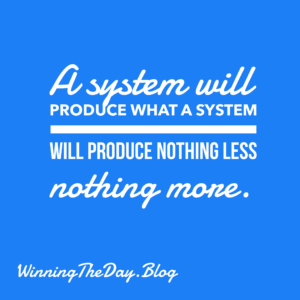What’s on My Mind: Sleep, Soil, and Next-Level Results
Ask my family, and they’ll tell you: I’m a solid sleeper. Earthquakes, tornadoes, storms – I’ve snoozed through them all. Yet last night, insomnia paid an unwelcome visit. Regardless, I rose with determination, greeting the day with energy and gratitude.
This morning, I found myself in the quiet embrace of a church pew, attending Mass. The message centered around soil – yes, soil. Four distinct types unfolded before me:
- Indifferent Soil: A barren wasteland, unyielding and uncaring. It reminded me of George Bernard Shaw’s words: “The worst sin towards our fellow creatures is not to hate them, but to be indifferent to them.” Indifference the essence of inhumanity.
- Shallow & Superficial Soil: Like a thin layer of topsoil, barely covering the bedrock. Quick fixes, surface-level connections – they thrive here. But depth eludes us. True growth requires roots that dig deeper.
- Distracted Soil: Scatterbrained and scattered, like seeds carried away by the wind. Distractions pull us in every direction. We forget to nurture what matters, leaving our potential untapped.
- Committed Soil: Ah, the fertile ground! Here, seeds take root, reaching for the sun. Commitment, resilience, purpose – they flourish. Next-level results sprout from this well-tended earth.
And the challenge echoed: “What type of soil are you?” I pondered. Perhaps I’m a mix – a garden of varied soils. Yet how can I strive for the committed soil, where growth thrives?
Mother Teresa’s wisdom echoed, too: being unwanted, unloved, and uncared for – is a significant “disease.” It’s too easy to look the other way and say, “That does not concern me!”
So, my friends, I’ll pass on the challenge: “How can we cultivate compassion, tend our soil, and win the day?”






